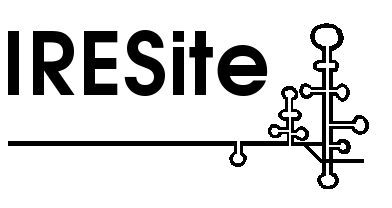|
Usage scenarios
There are many usage scenarios how users can exploit IRESite contents. Here are a few examples which we might not be immediately obvious.
- Users can lookup IRESs tested using direct RNA transfection of in vitro transcribed messages or translated in an in vitro translation lysate, whether the messages were capped and uncapped, distinguish between GpppG and ApppG 5'-cap structures and combine such criteria with presence of poly(A)-tail.
- Users can sort IRESs by their strength scaled to a specific positive or negative control and filter only results of experiments in a certain organism, cell line or in vitro system.
- Users can search for IRESs scaled directly to a certain positive/negative control and notably can also find defective variants of IRES of interest (not only the functional).
- There are dozens of parameters characterizing the experimental setup and thus users can search for IRESs tested in a certain cell line or organism or even a taxonomic group, as already mentioned in the previous text.
- Users can search for IRESs which do or do not incidentally display promoter activity when copied into DNA form. This has generated some misunderstanding in the past and although such incidental promoter activity does not exclude IRES function per se such cases need to be evaluated carefully and experiments adjusted appropriately.
- Users can lookup IRESs, actually DNA plasmid vectors containing them and which transcription results in a heterogeneous population of transcripts in vivo (notably as a result of aberrant splicing or cryptic promoter activity in tested plasmid region).
- Use of stronger or weaker promoters used for expression of transcripts is yet another important aspect of experimental setup and experiments can be filtered by name of a promoter. This is also important as promoters also differ in their abilities to drive transcription to greater or lesser extent from a single site or a population of initiation sites.
- Users can rely on a specific subset of our dataset, for example where we believe the transcript sequence matches the experiment or exclude those where we know we did not obtain matching sequence.
- Finally, users can rely on our opinion and focus on well-proven IRESs.
|

